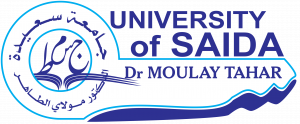Self efficacy: becoming an active, creative learner 2024


People’s Democratic Republic of Algeria
Ministry of High Education and Scientific Research
Dr. Moulay Tahar University of Saïda
Faculty of Letters, Languages and Arts
Department of Literature and English Language
![How to design remarkable active learning classrooms [checklist]](file:///C:\Users\DELL\AppData\Local\Temp\msohtmlclip1\01\clip_image004.jpg)
Lecturer: Ali Rabah Nouria
level:1st -year LMD Students
Academic year: 2022/2023
Days : Saturday and Sunday

Main objectives:
By the end of this lecture students learn active learning methods and engage in their learning by thinking, discussing, investigating, and creating. In class, students practice skills, solve problems, struggle with complex questions, make decisions, propose solutions, and explain ideas in their own words through writing and discussion.

From the figures below students are going to find their own answers to the following questions:
Ø What is an active learning strategy?
Ø How can students develop their own active learning strategy?

(Available at https://www.twinkl.it/teaching-wiki/active-learning)

Test Yourself
One of the ways to improve your study skills is to evaluate your strengths (and weaknesses). Take this quick quiz to see how your skills rate.
Directions: Circle your answer for each question (1 = never, 2 = sometimes, 3 = always), and then total the score for each section.
The scoring summary is at the end of the quiz.
|
Sections
|
Questions |
Never |
sometimes |
always |
|
Planning Your Classes |
1. I spend time thinking about what classes I should take based on important factors (versus deciding on a class because it’s easy or at a convenient time). |
|
|
|
|
2. I know the requirements of all the classes I take, including how I will be assessed and what materials I need. |
|
|
|
|
|
3. I treat my teacher with respect and feel comfortable asking questions if I don’t understand something. |
|
|
|
|
|
4. I arrive to my classes on time. |
|
|
|
|
|
5. I have a good idea of what my grades are in my classes at all times (not just when I receive midterm grades or other progress reports). |
|
|
|
|
|
Organization-al - and Time Management Skills |
1. I use folders and notebooks for each of my subjects. |
|
|
|
|
2. I keep an assignment notebook (or similar list) to keep track of my homework and major assignments. |
|
|
|
|
|
3. I turn in my homework assignments on time. |
|
|
|
|
|
4. When I have a major assignment, I start working on it well before the deadline rather than the night before. |
|
|
|
|
|
Reading |
1. I can find the main idea in a paragraph or series of paragraphs. |
|
|
|
|
2. I take notes on my reading assignments, and these notes help me later when I have to study for a test or write a paper. |
|
|
|
|
|
3. I allow plenty of time to do my reading assignments instead of waiting until the last minute. |
|
|
|
|
|
|
4. I preview a reading assignment before starting to read, and I note key elements such as the chapter outline, discussion questions, and illustrations. |
|
|
|
|
|
5. I have a good sense of the important facts, concepts, or ideas in a reading assignment. |
|
|
|
|
Taking Notes |
1. I know how to listen for the important information in a lecture and how to effectively record that information in my notes. |
|
|
|
|
2. I look for certain clues (such as charts or information that is repeated more than once) when I take notes. |
|
|
|
|
|
3. I use some shorthand method (such as using abbreviations) to help me quickly write my notes. |
|
|
|
|
|
4. I review my notes and organize them, looking for gaps and filling in any missing information. |
|
|
|
|
|
5. When I study for a test that’s based on notes (from a lecture or reading), I find that my notes help me be well-prepared; that is, my notes are relevant and useful study guides. |
|
|
|
|
|
Doing Research |
1. When given a research assignment, I make sure I understand all the requirements of the assignment. |
|
|
|
|
2. I select a topic that not only meets the requirements of the assignment but also is interesting and relevant to the subject. |
|
|
|
|
|
3. I know how to use the resources at my school and my local library; if I don’t, I ask for help. |
|
|
|
|
|
4. I know how to use the Internet to do research, and I also evaluate the source of the information to be sure it’s credible |
|
|
|
